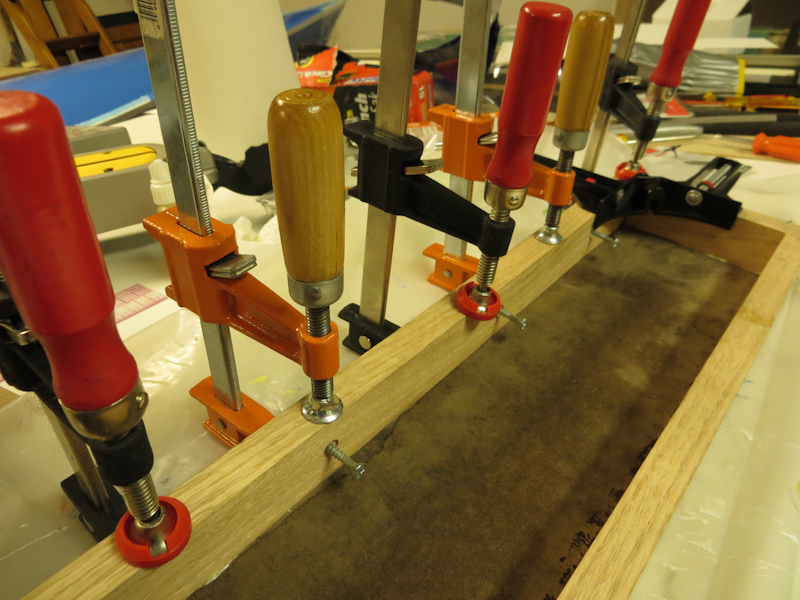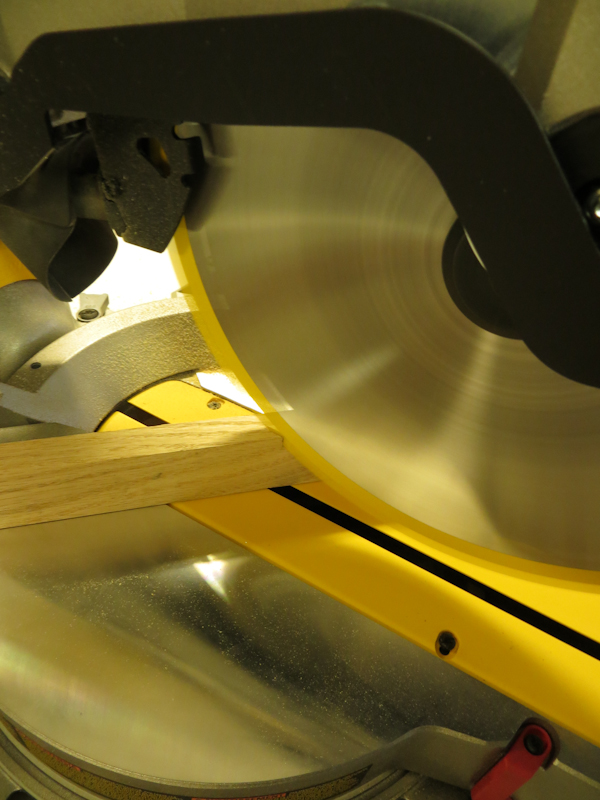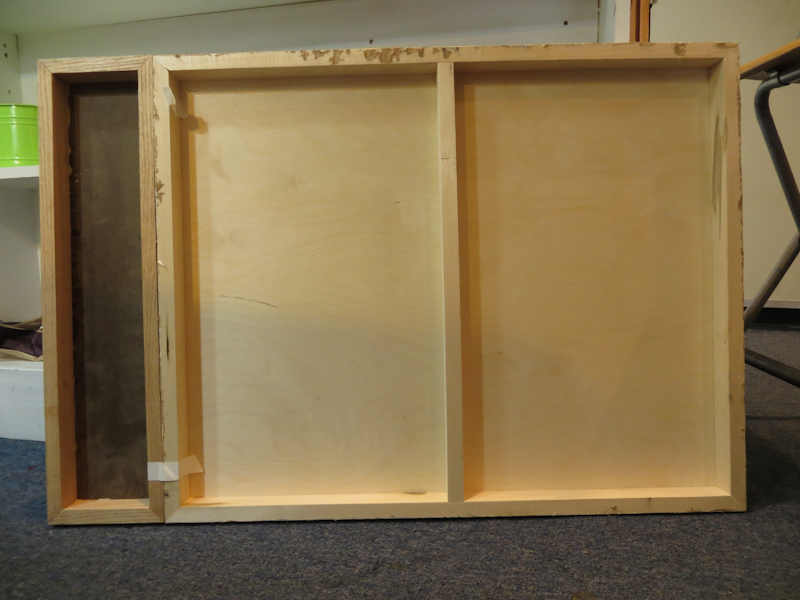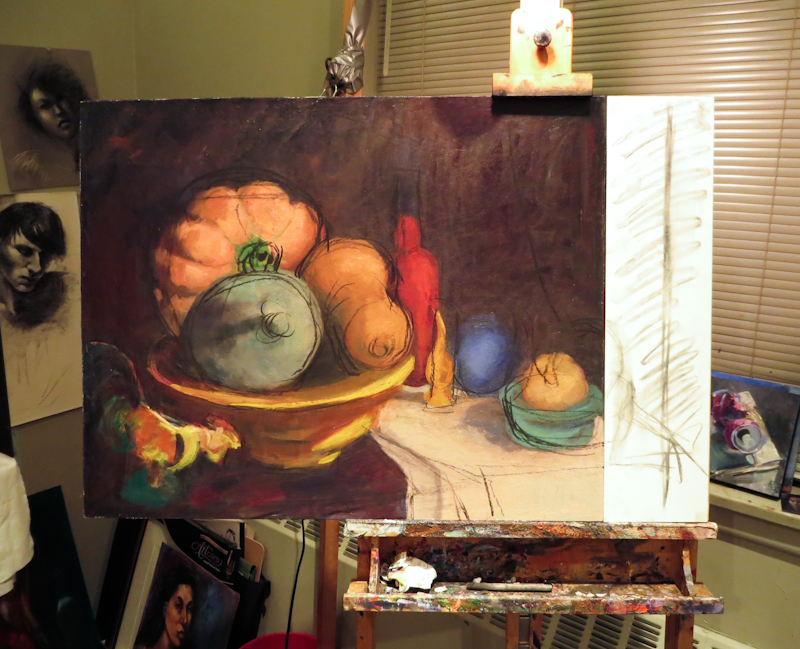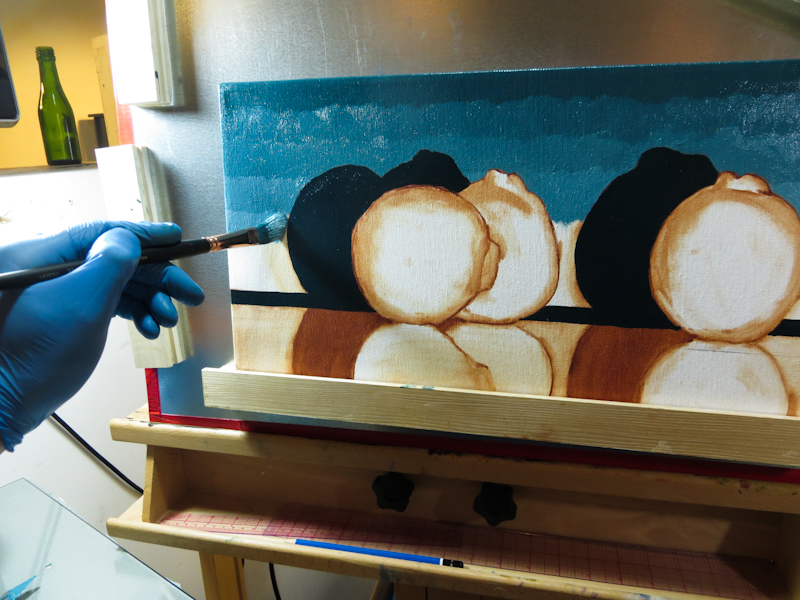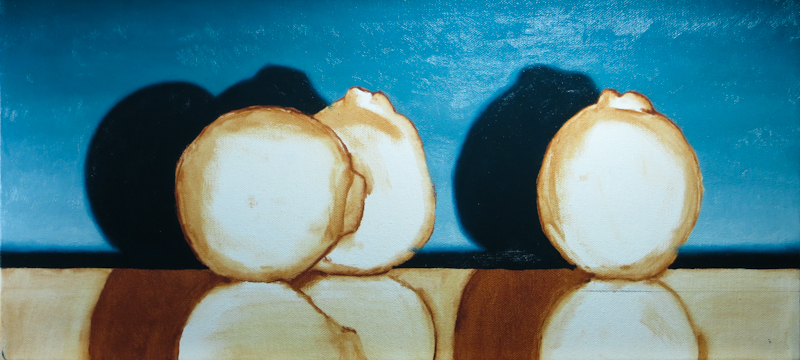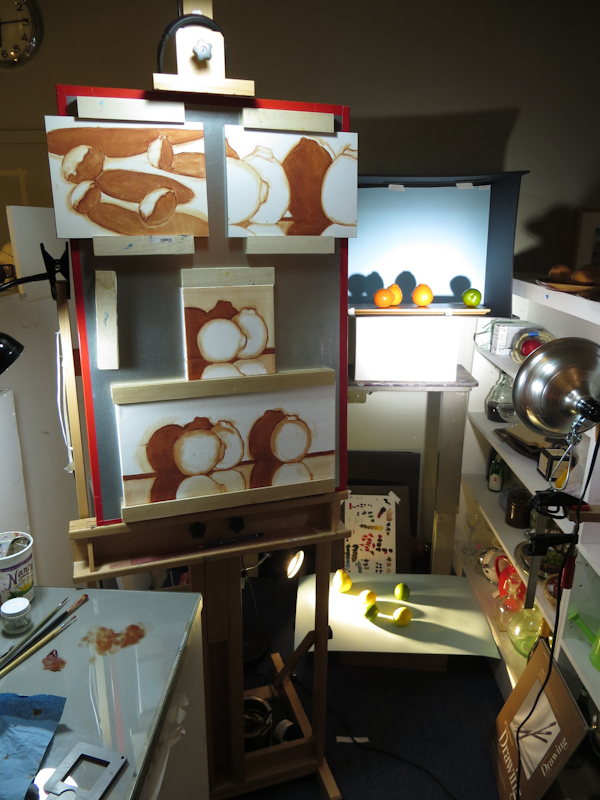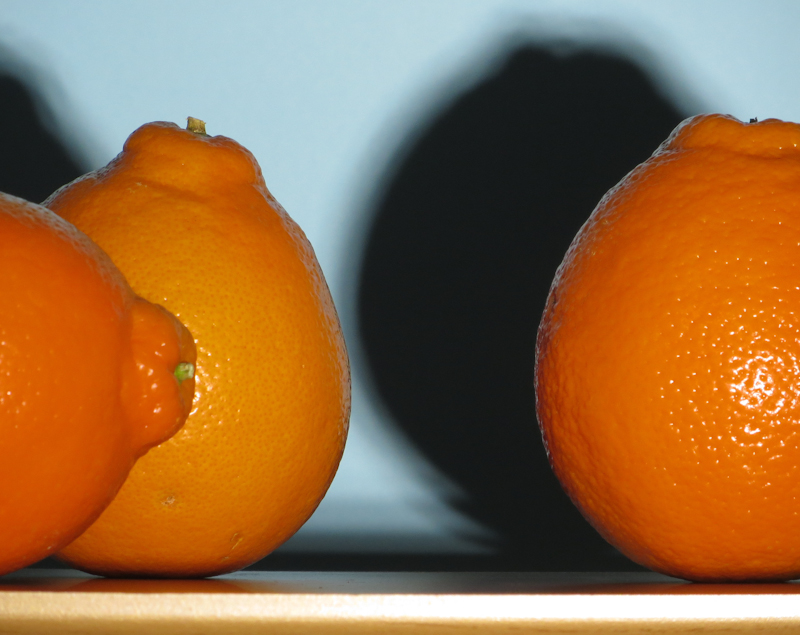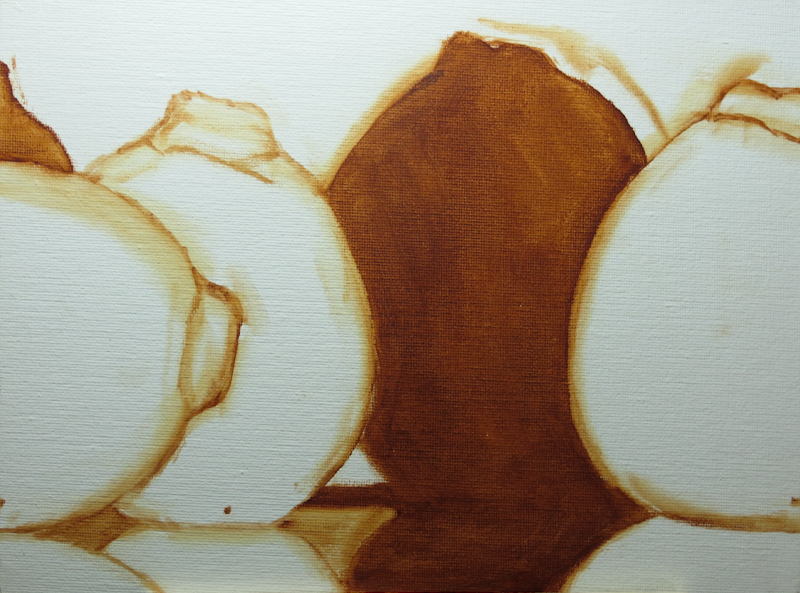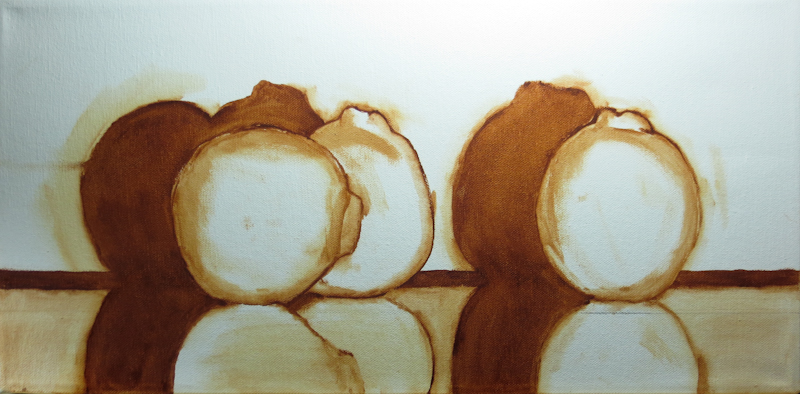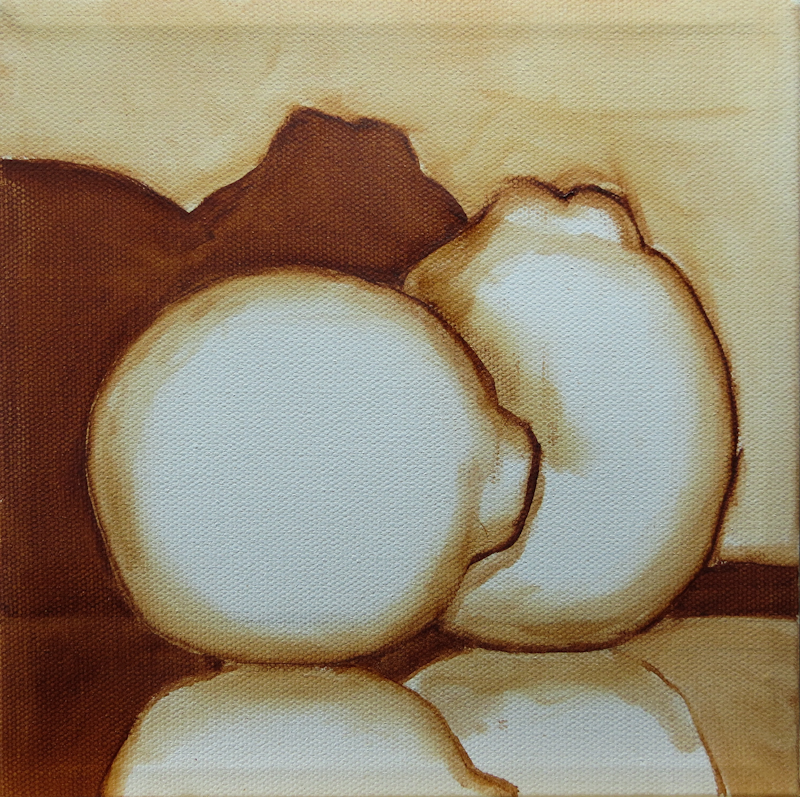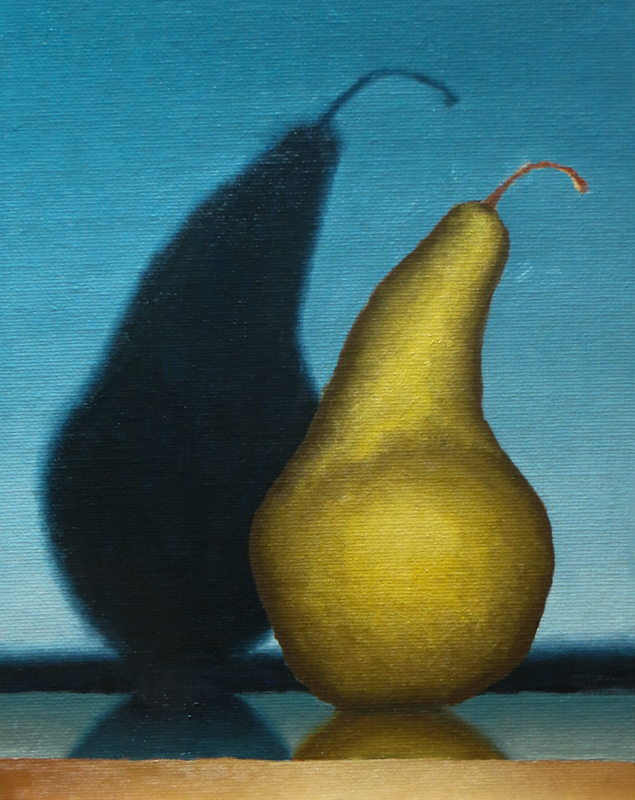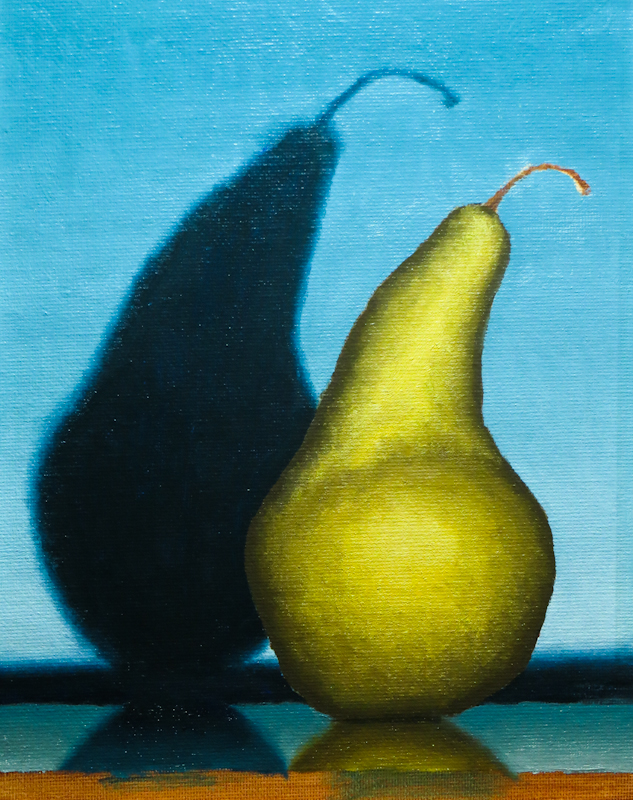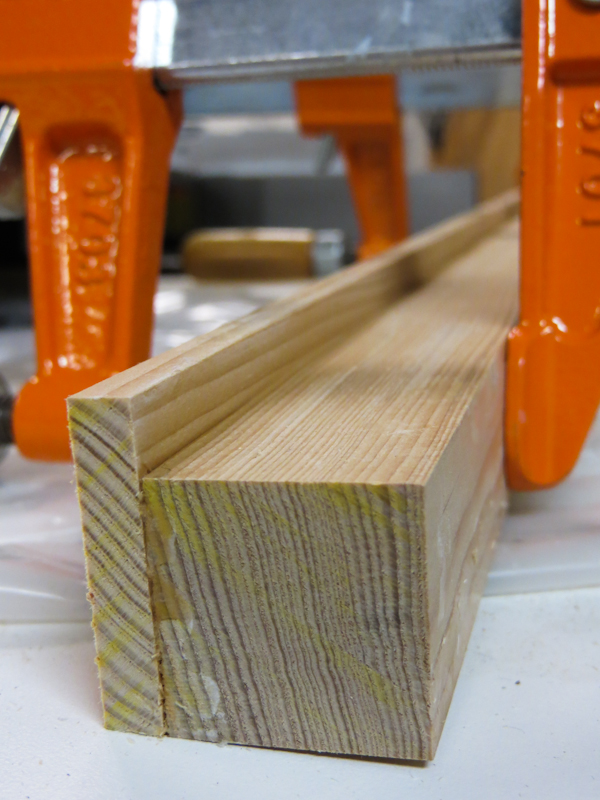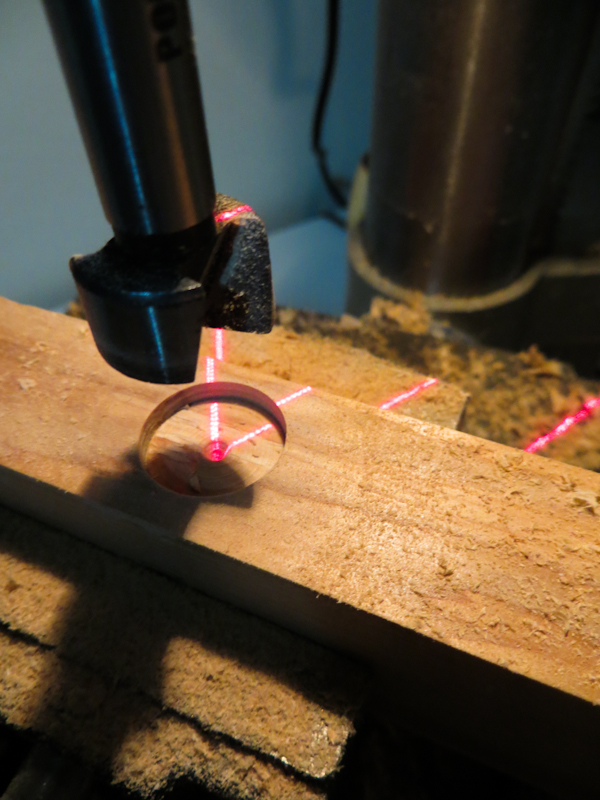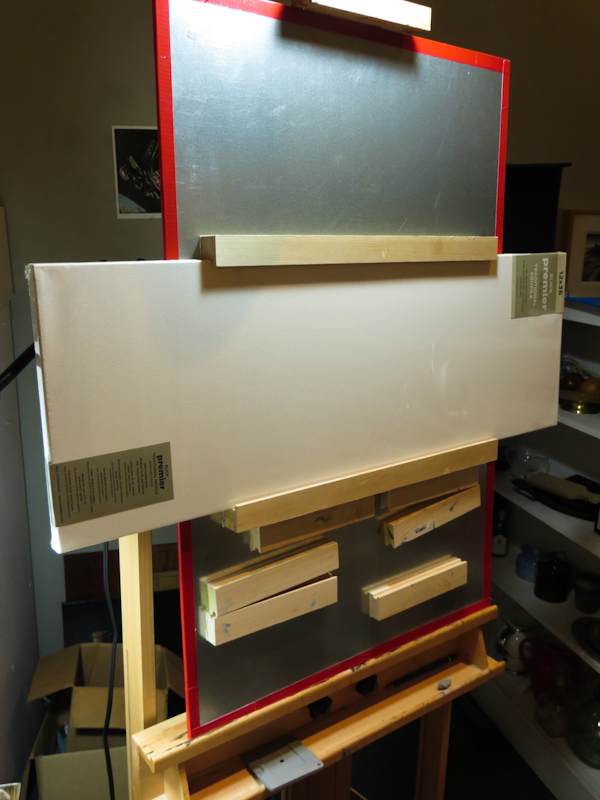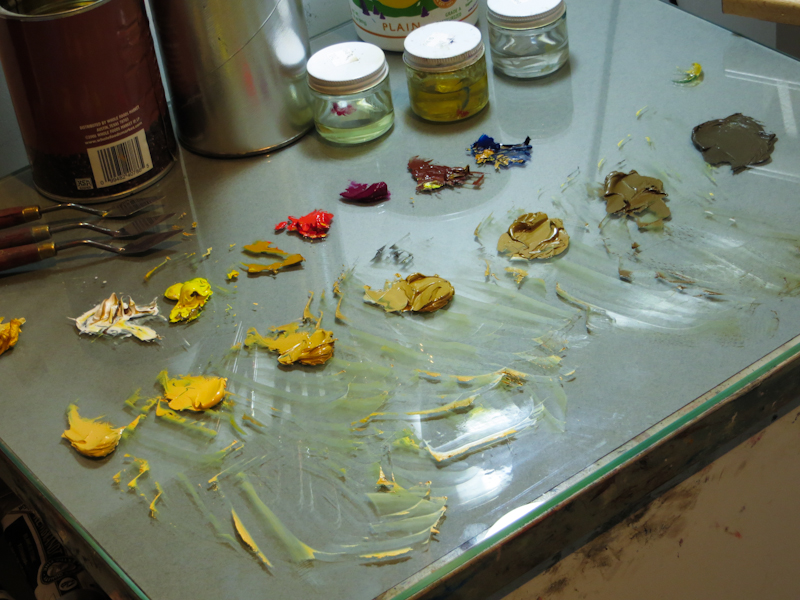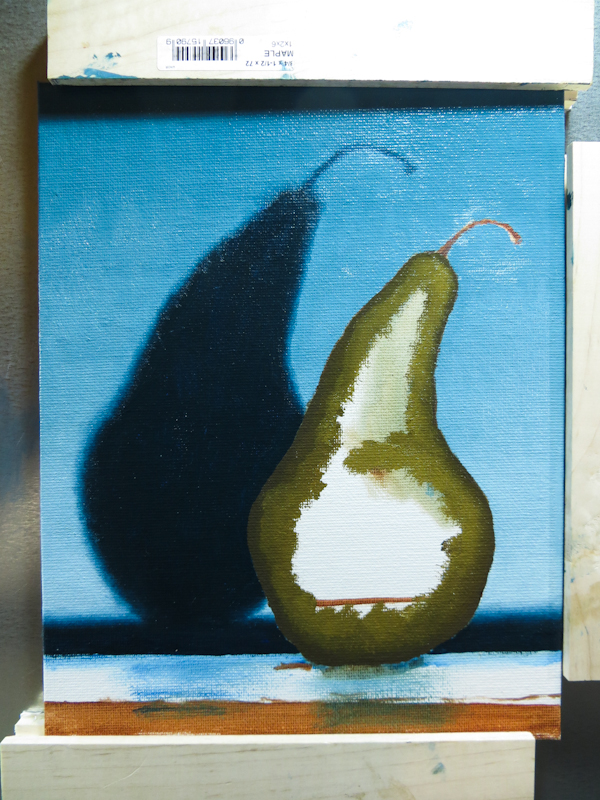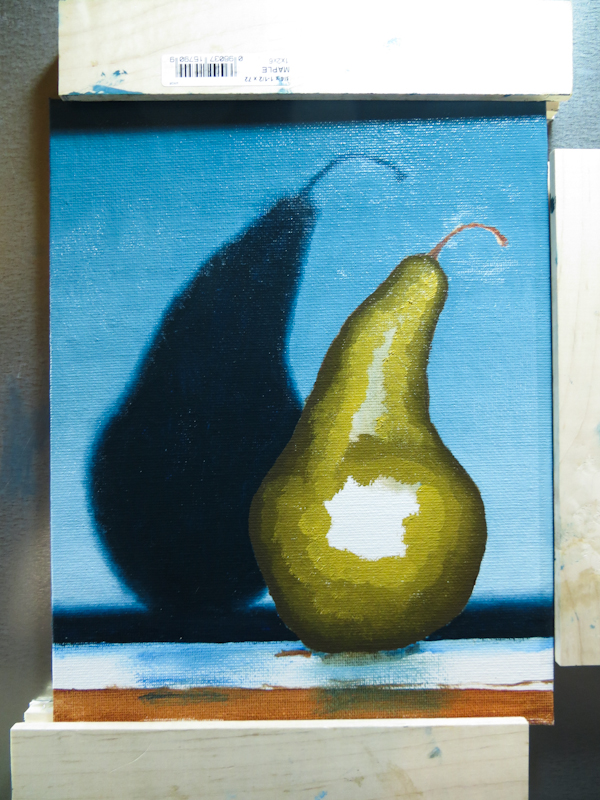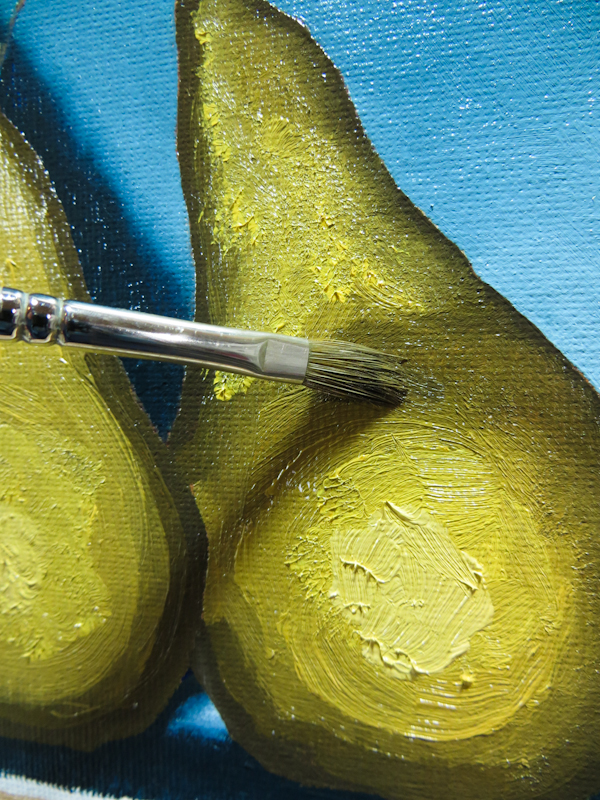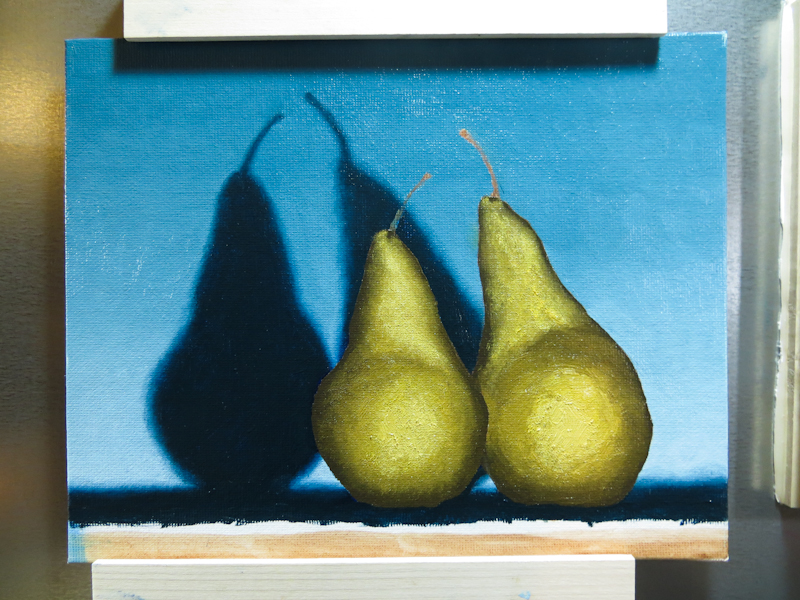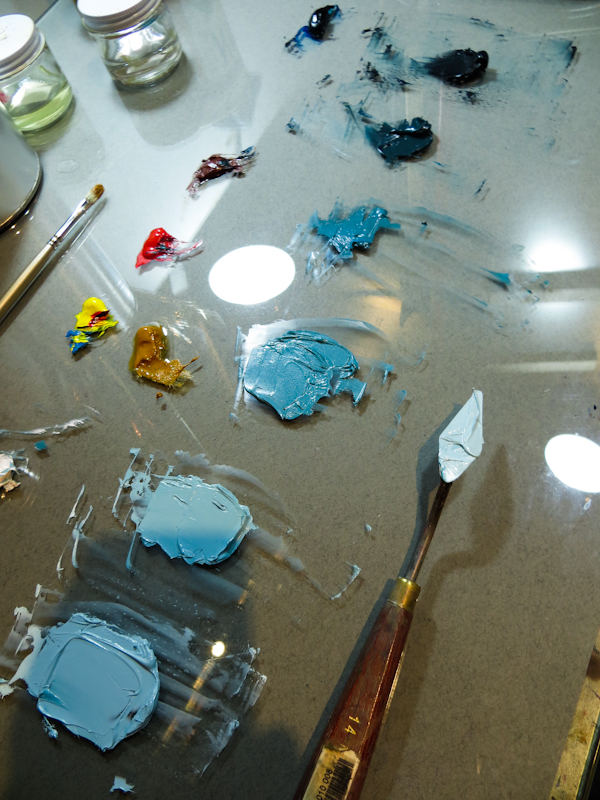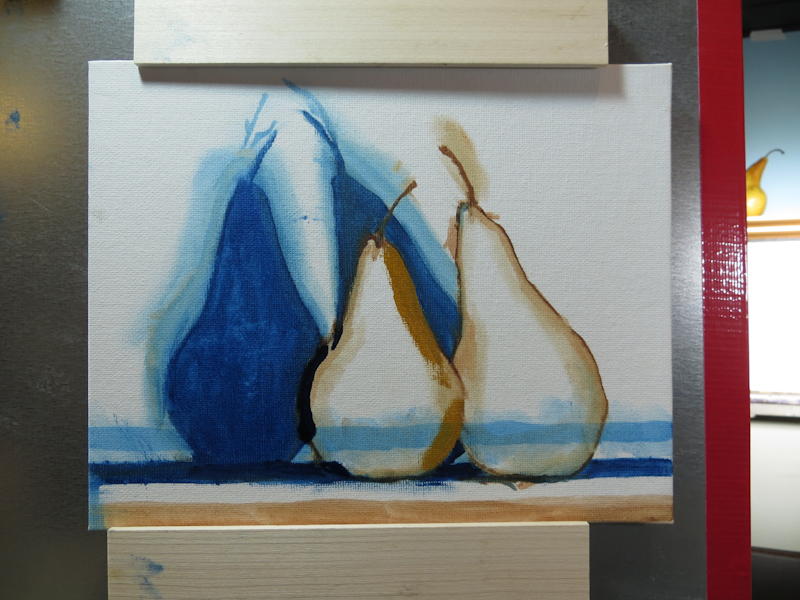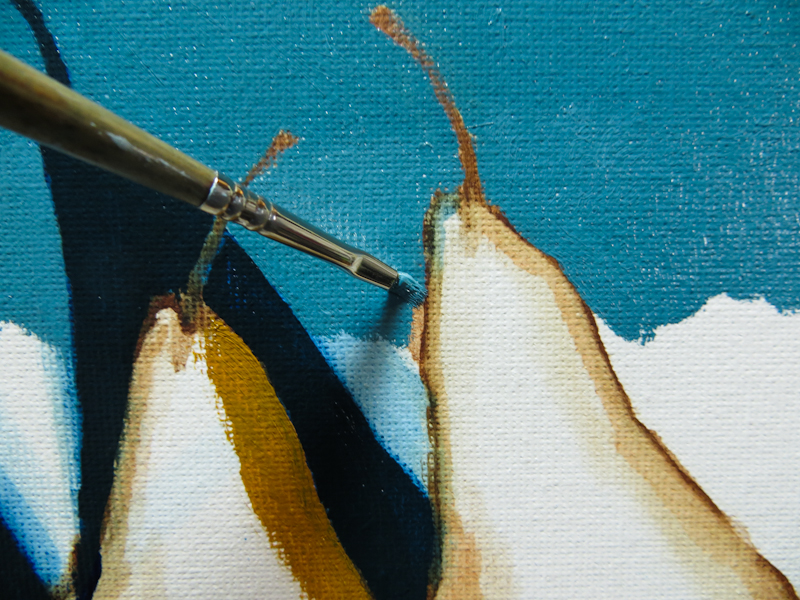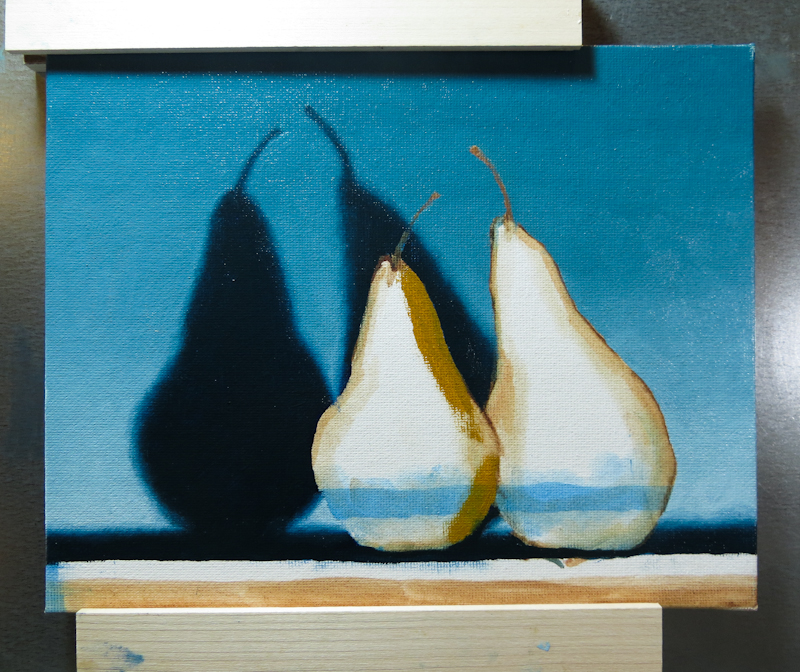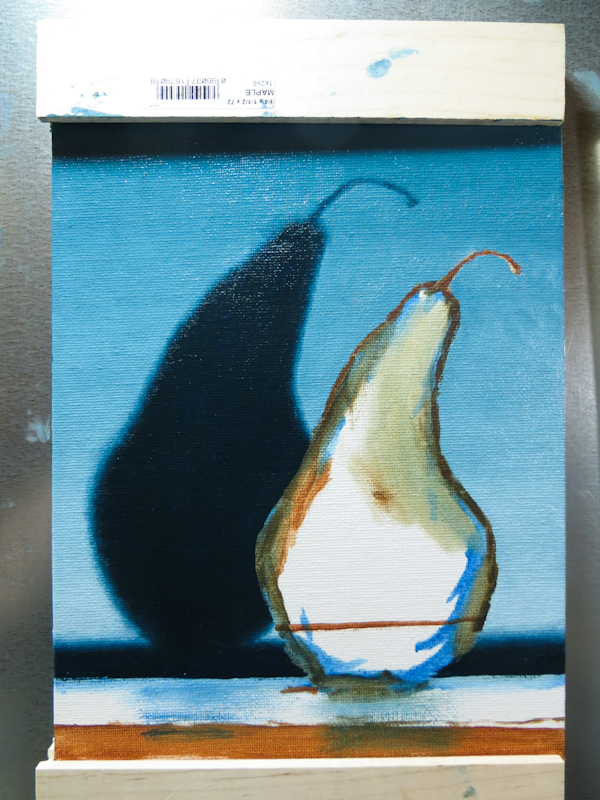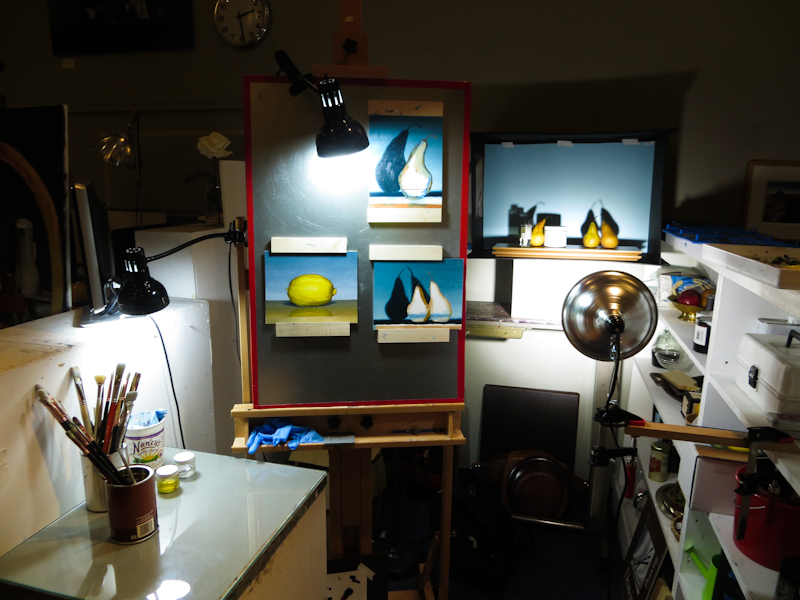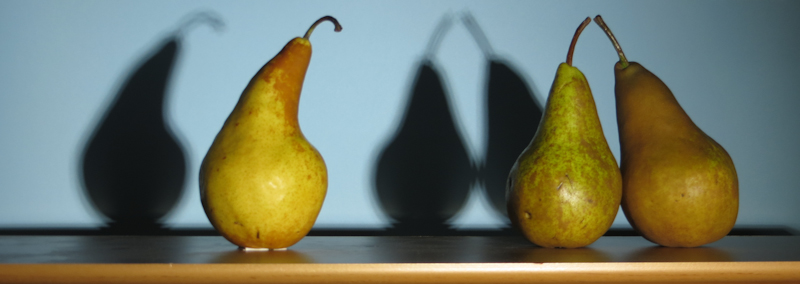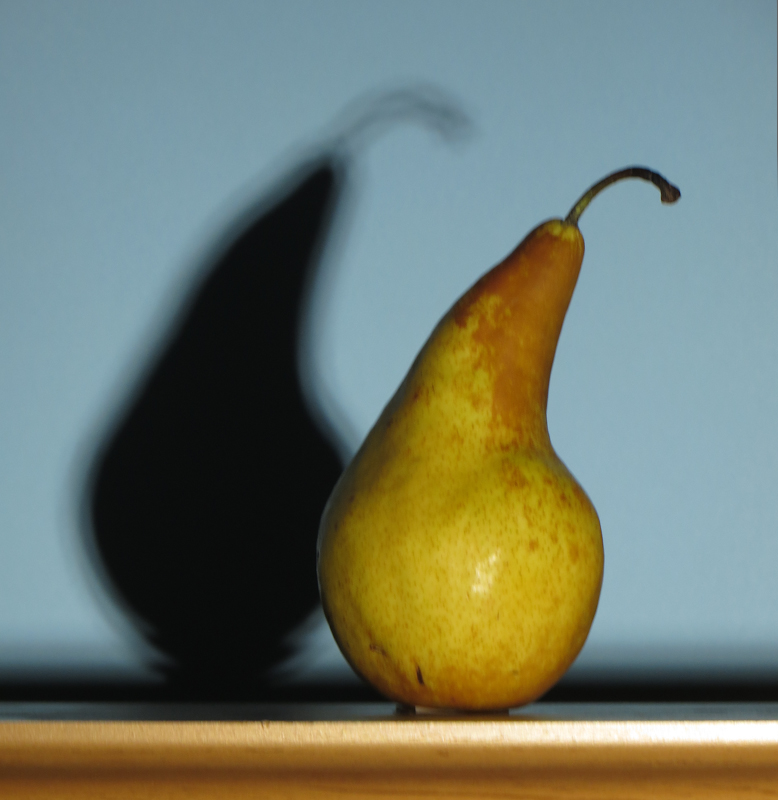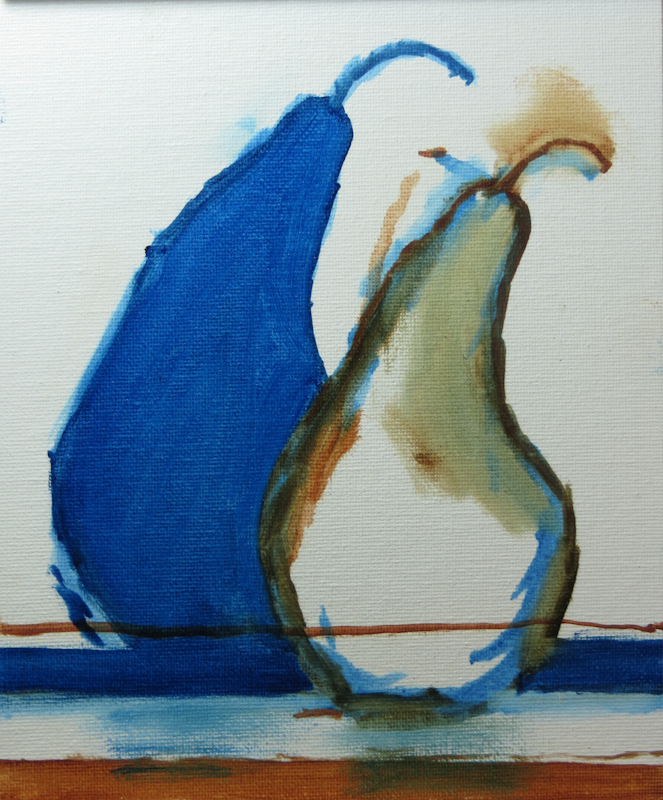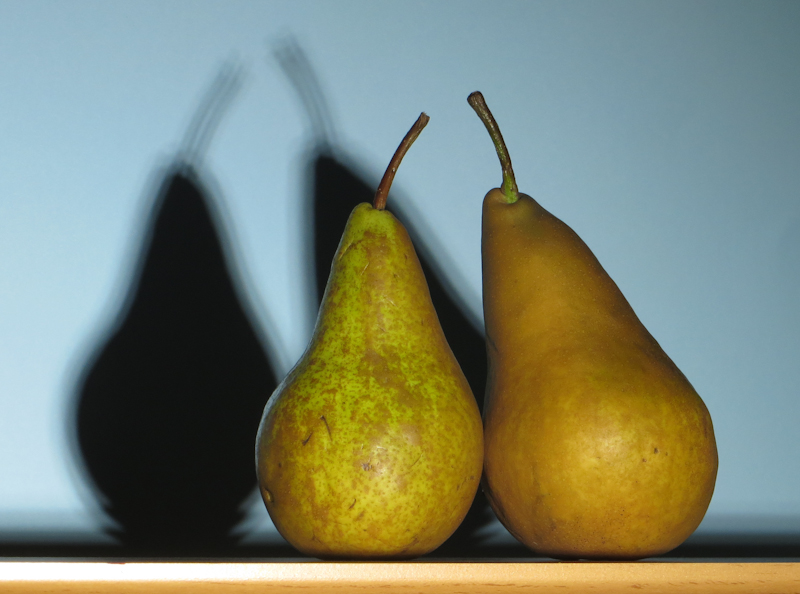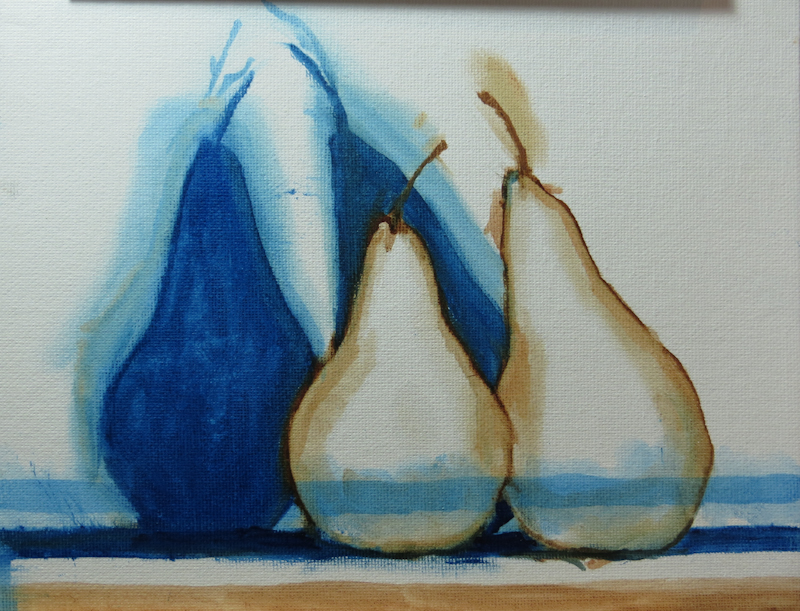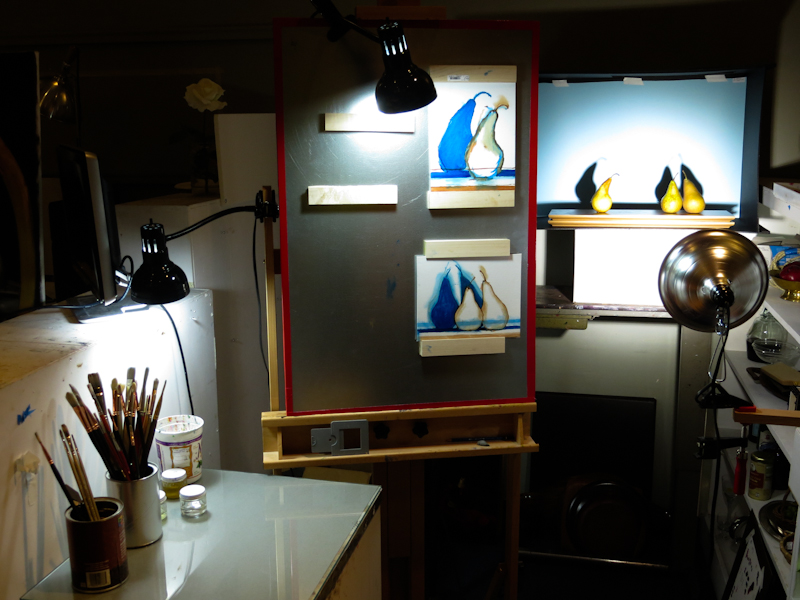Up here in the Pacific Northwest we don’t get a lot of sunlight, so we have to supplement with artificial light. For the past few years I have been working with 5000k full-spectrum fluorescent bulbs. These bulbs give off a natural looking, neutral white light and are available in a variety of styles from the traditional four-foot tubes to the coiled compact fluorescent bulbs that screw into standard light sockets. These bulbs are great because they don’t put out a lot of heat.
In the atelier I’ve been using a 27W CFL bulb to light my still-life tableaus. This bulb is not very bright so I have to position it close to my props and this leads to very soft shadows that are hard to discern, even when the props are in a shadow box.
Last week as I was walking the aisles of the hardware store, looking for magnets for my canvas holders, I happened to go down the electrical aisle and saw a new 19.5W LED flood light bulb that puts out 1300 lumens at 5000k.
The LED bulb was about $40 and it has been a huge improvement over the CFL bulb. It is extremely bright and the light falls in a fairly tight, 30 degree cone. This allows me to position the bulb about 6 feet back from the set, which makes it more like a point source.
With this bulb, the form shadows and cast shadows are visible, even when all of the room lights are on. The only problem with the bulb is that it weighs about a pound and this makes it hard to position in clamp-on holder. I find that if I don’t take precautions, the lamp will tend to shift over time until it is pointing at the floor.
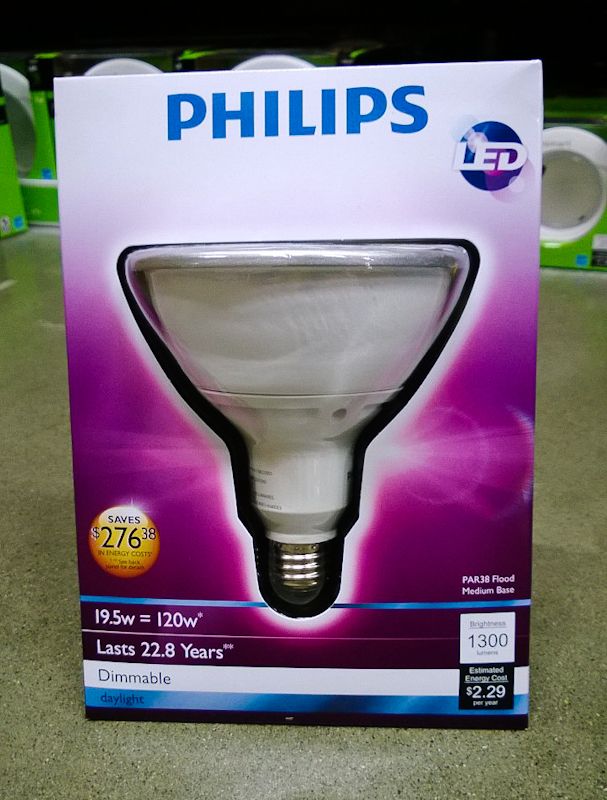
Philips 120W Equivalent Daylight 5000K PAR38 Dimmable LED Flood Light Bulb.

Here’s an example of the light output in a darkened room. Note that the bulb is bright enough that I can position it to act more as a point-source. The chair is well lit and I still get jet-black shadows.
